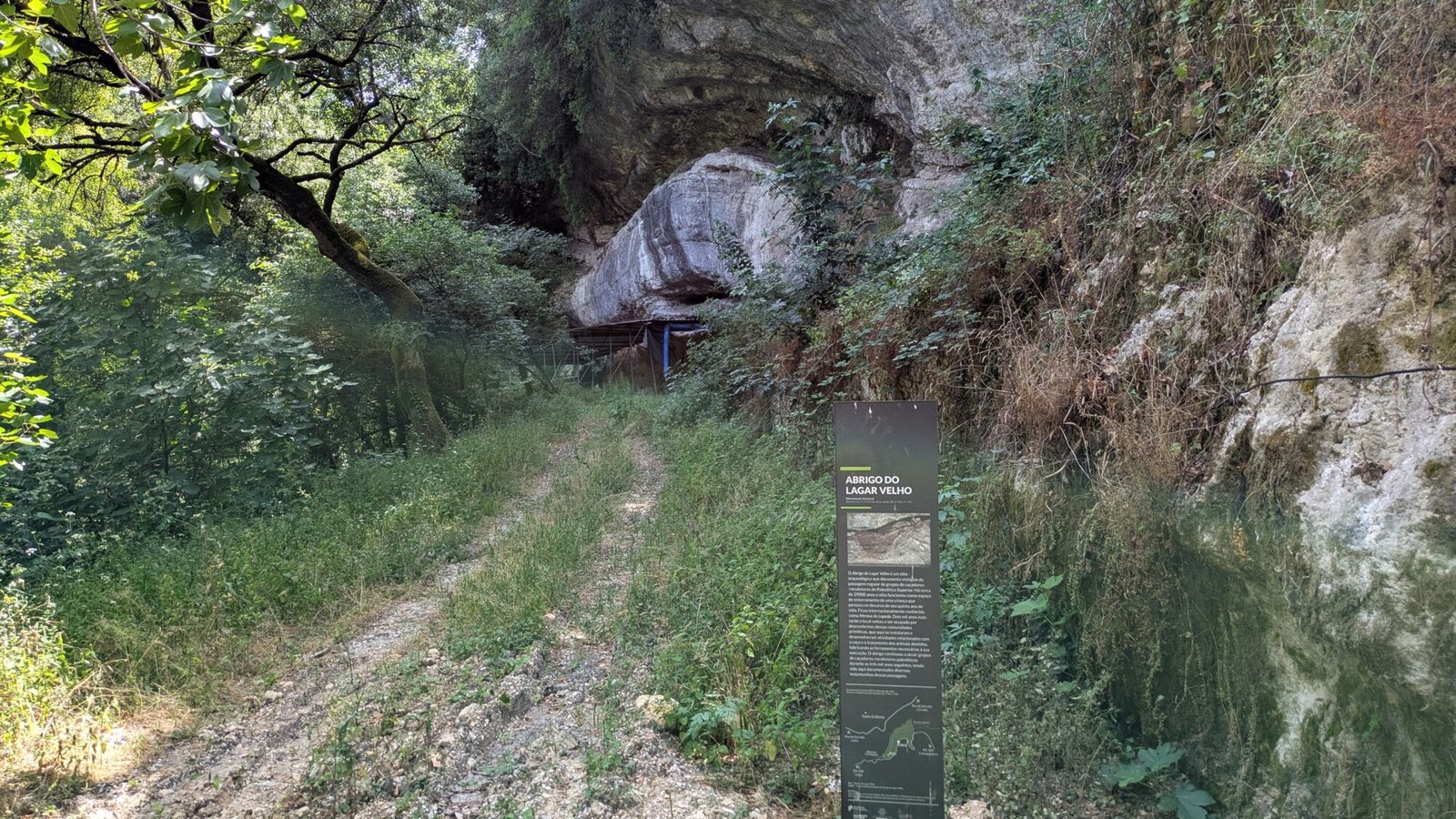Also known as: Vale de Lapedo
Walk along the valley floor, enjoying the sunshine and peacefulness of the sparsely populated road. The wind blows through the trees, adding a soft rustling sound to the noise of the stream. On either side of the valley floor, rough stone cliffs reach up above the trees. Peering through the trees, across the stream, a large bulging cliff face looms above a corrugated metal roof suspended on a lattice of metal poles. If you could enter the enclosure, you would be standing in the centre of a site with incredible archaeological importance. Instead, you lean against the fence, peering into the incredibly distant past.
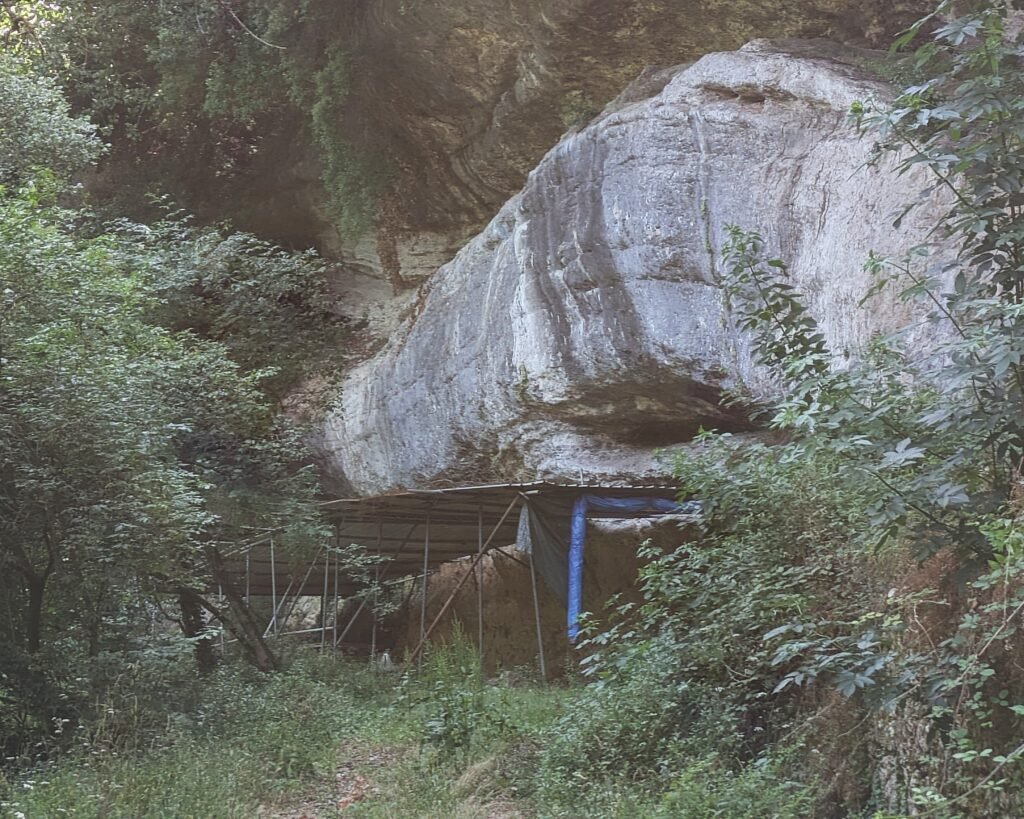
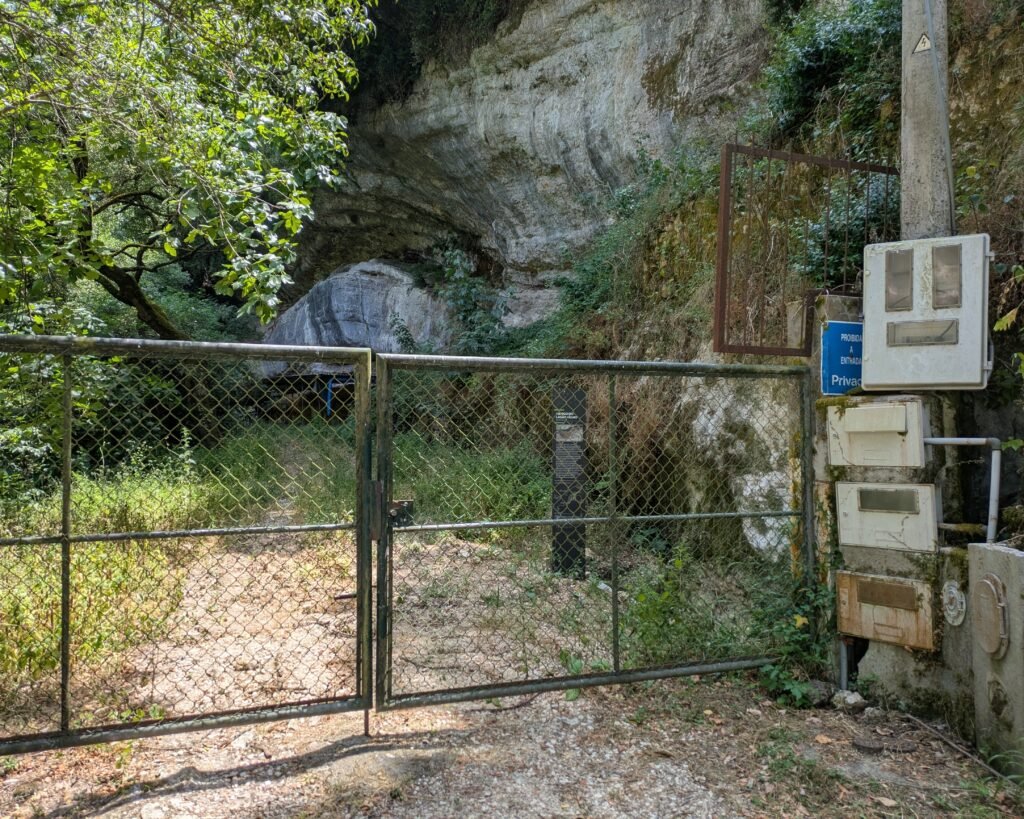
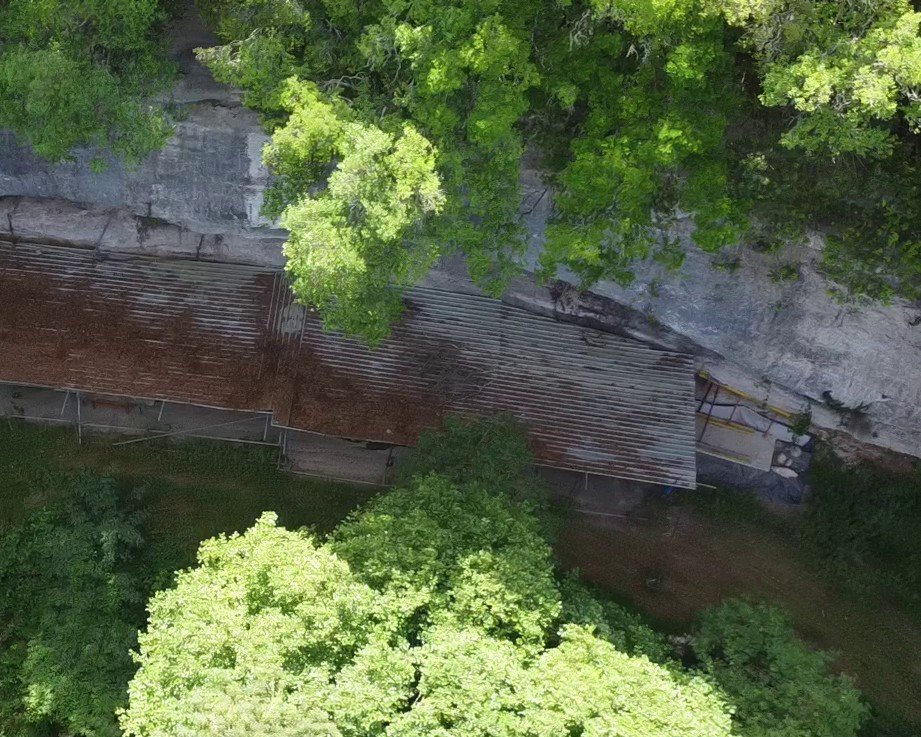

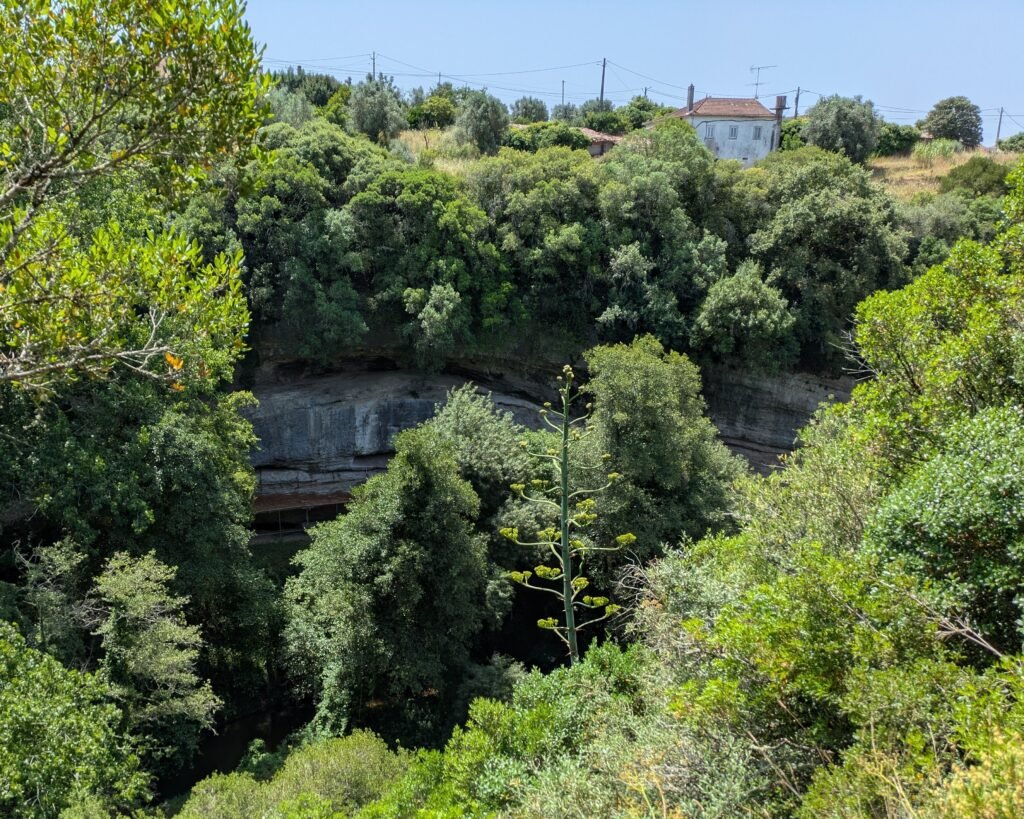
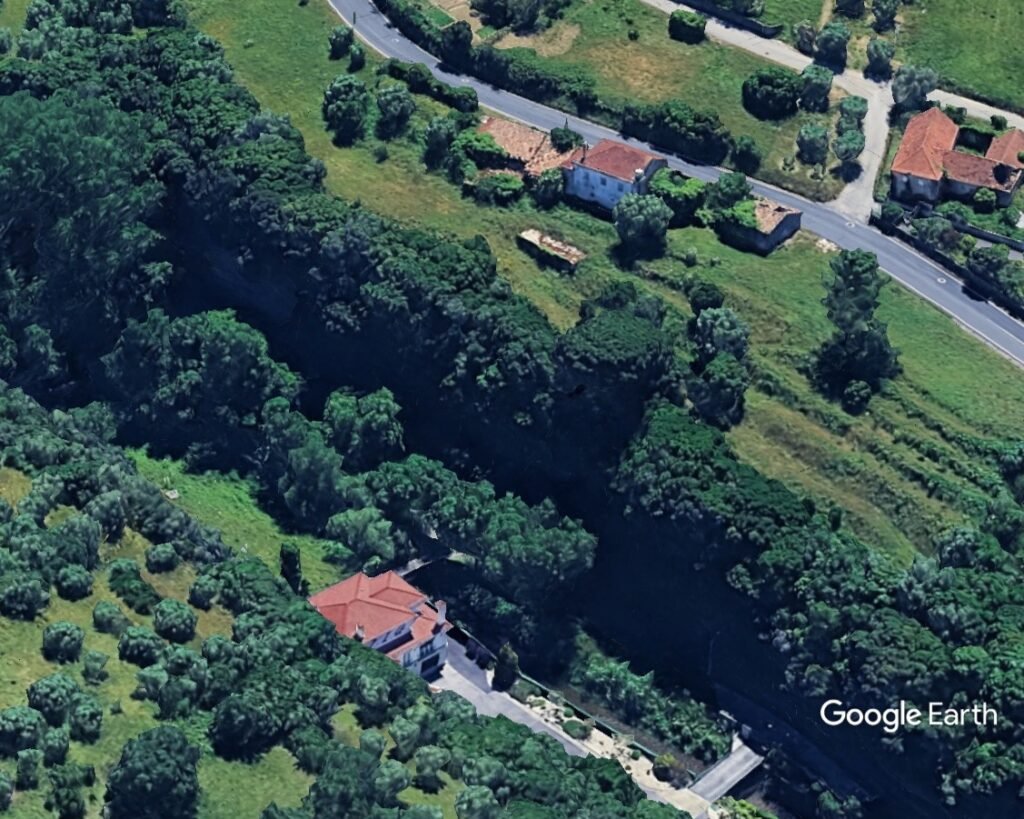
The “Abrigo de Lagar Velho” is a shelter (“abrigo”) beneath a rock wall in the Lapedo Valley. (“Lagar Velho” means an old olive oil press – there was one beside the spot when the site was discovered.) In 1998, archaeologists discovered a shallow grave with the remains of a small child in this shelter. This was to become one of the most famous archaeological discoveries from Portugal, with repercussions throughout the world that changed the way we understand who we are as humans.
The story of the discovery is a fascinating one, with many interesting details in it1, but here’s a brief recounting:
When human bones were found in the shelter, a team of archaeologists led by João Zilhão quickly got started excavating. Cidália Duarte was in charge of the excavation of the bones, and Erik Trinkaus, from America, was brought in because of his extensive experience with Paleolithic remains. Working very quickly before the site could get damaged, the team rapidly ascertained that this was the grave site of a small child, carefully buried and covered with red ochre (commonly used in prehistoric burials). As the bones were carefully examined and measured, it became apparent that the child exhibited features both of modern human beings (Homo sapiens), but also of Neanderthals (Homo neanderthalensis).
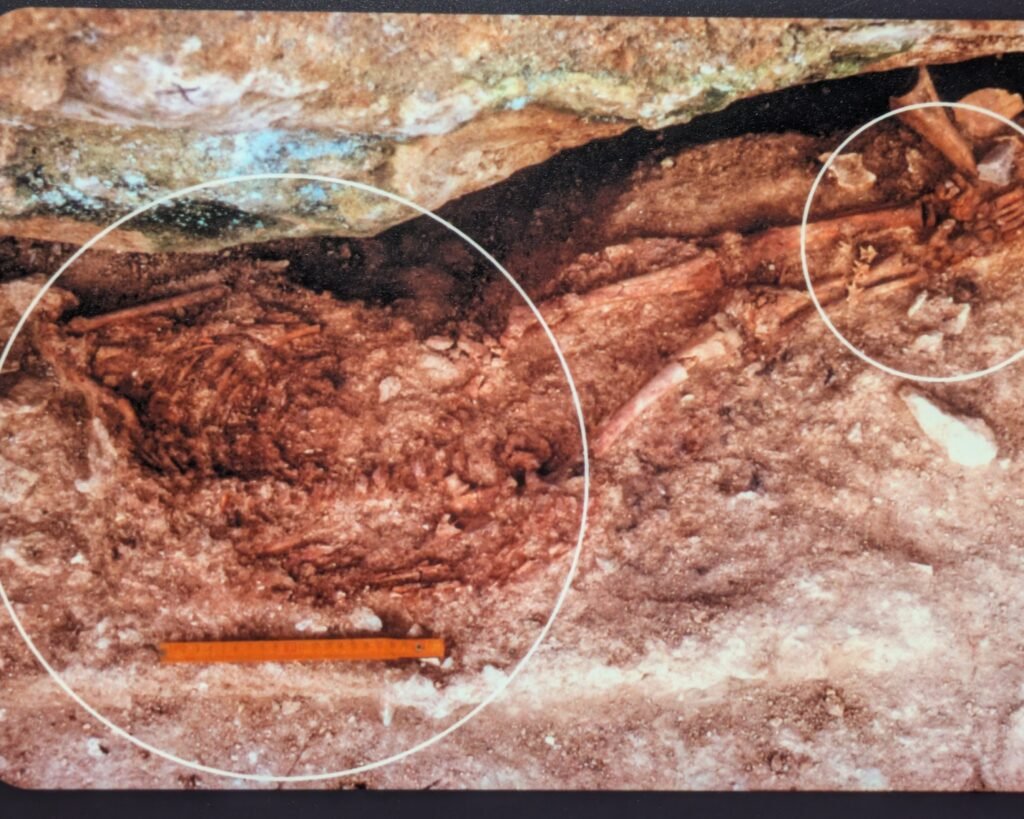
This hybridization between the two species attracted a great deal of attention, with multiple media reports, and even scorn. Many people, including some archaeologists, couldn’t accept the fact that our species had been crossed with another. (It’s worth pointing out that the theory never had been, as media reported, that this individual child had parents of different species. Zilhão consistently states that the child’s features show that there had been widespread mixing over a long period of time.) Nevertheless, Zilhão and Trinkaus persisted and published their work and evidence. Despite resistence, the evidence came to be generally accepted and years later the gene sequencing of both species proved that there had indeed been mixing of Neanderthal genes within Homo sapiens.
At the time, it was not possible to accurately date the child’s bones. Radiocarbon dating from charcoal and animal bones in the gravesite gave an age of between 27 and 29 thousand years ago, but researchers continued to try to date the human bones themselves. It wasn’t until much more recently (May 2025) that new methods enabled them to publish an accurate dating of the child’s bones: between 27,780 and 28,550 years ago.
The site also contained many animal bones, stone tools, and more. Archaeologists are still excavating and studying the site, and are learning much about life during that time.
Since the site itself can’t be visited, the interpretive centre (“Centro de Interpretação do Abrigo do Lagar Velho” or CIALV) is a must see. There is a wealth of information here that explains the find and puts it into a broader context, complete with information about the other activities that Paleolithic inhabitants of the valley engaged in, including hunting and creating stone tools. (Displays are all in Portuguese, so bring a translation device …or ask questions of the guide, who speaks English.)
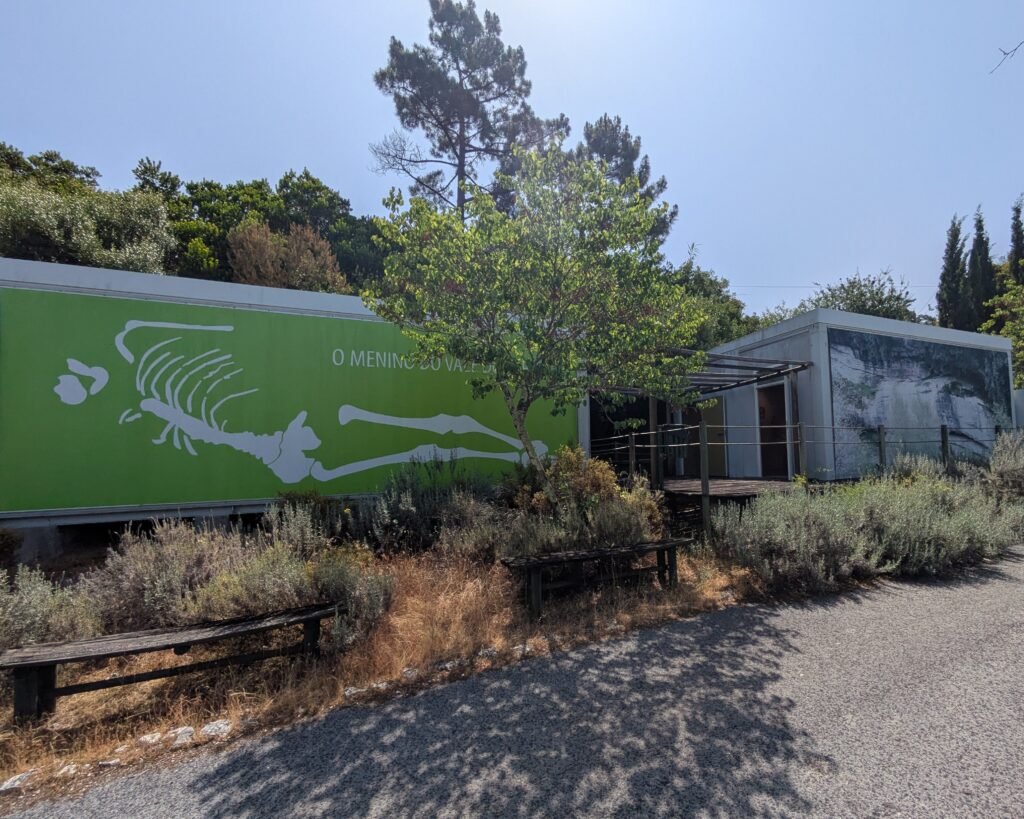
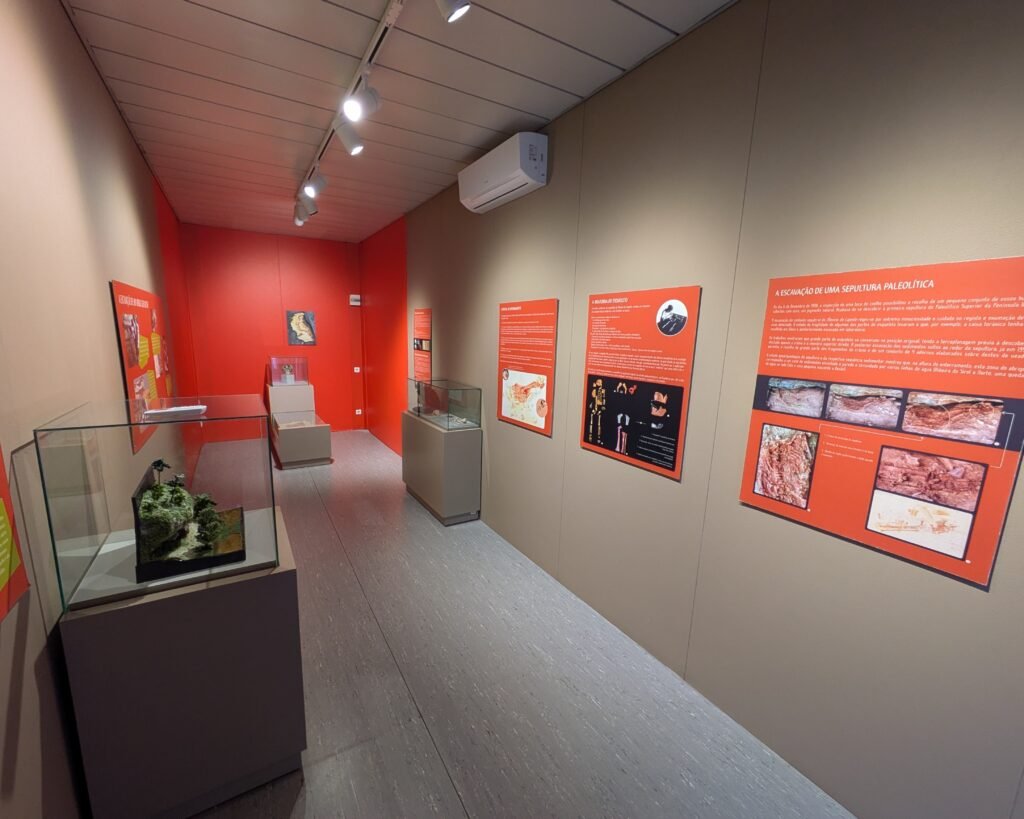
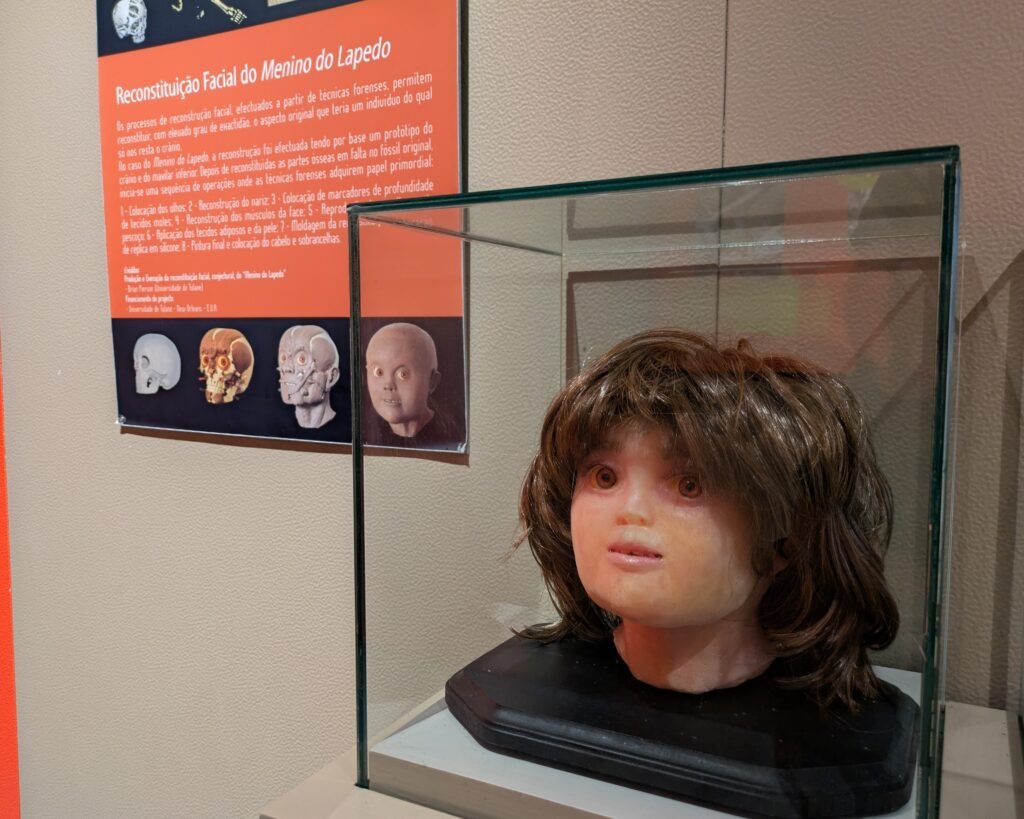
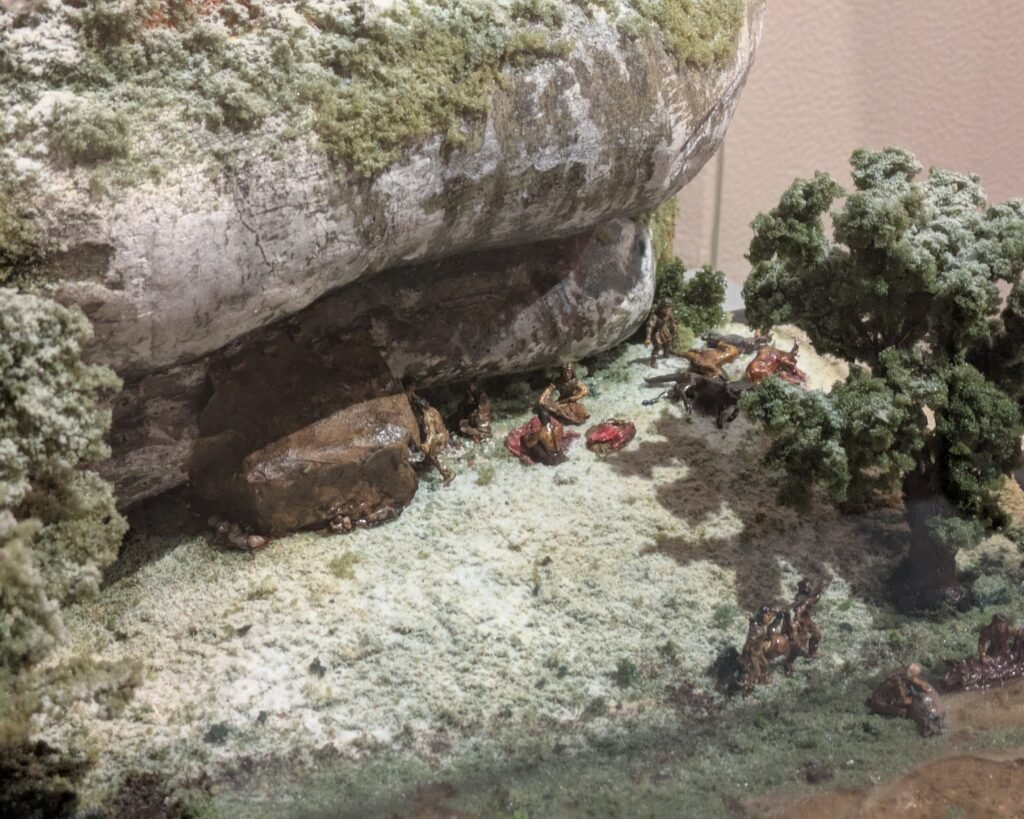
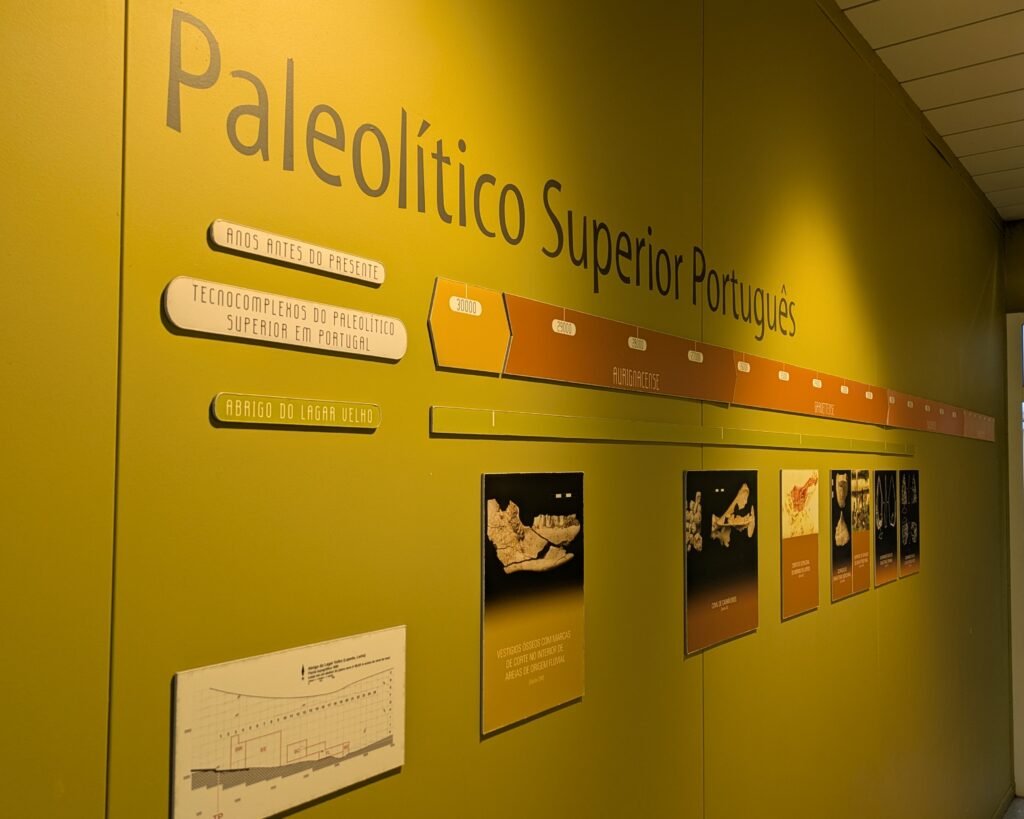
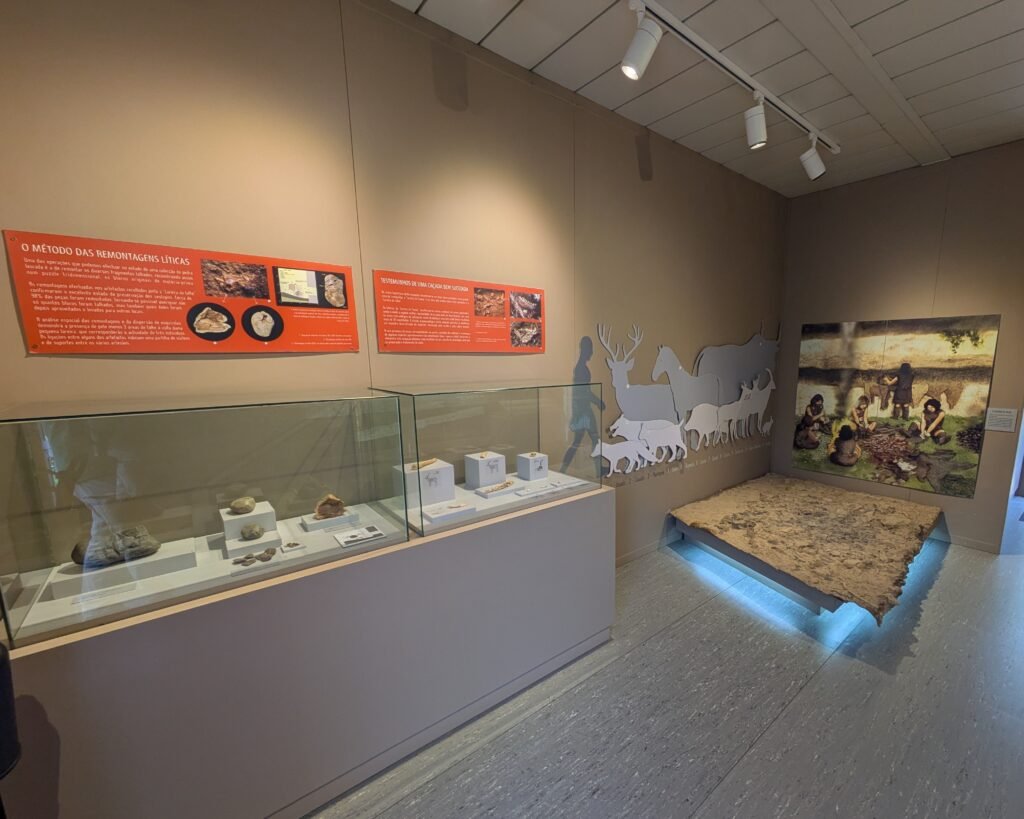
There is another display with some more information in the Leiria Museum. The actual skeleton, which has been declared a National Treasure, is housed in the National Museum of Archaeology in Lisbon.
Location
The Lapedo Valley is located in the Leiria district, in the municipality of Leiria, parish of Santa Eufémia e Boa Vista. The shelter and the interpretive centre are both just east of Leiria, near the village of Carrasqueira. The shelter is alongside the Caranguejeiro stream (also known as the Sirol).
Access
The shelter itself is an active archaeological site, and is closed to visitors. You can walk along the road and the trails through the Lapedo Valley.
The interpretive centre is open Fridays, Saturdays, and Sundays from 9:30am – 12:30pm and again 2 – 5:30pm. Admission is free.
Signage
There are road signs to the Lapedo Valley, where there is a pleasant picnic park (with parking). In the valley there are trail signs for the hiking trail (LRA PR1) through the valley which goes near the shelter. (The signs include the Abrigo do Lagar Velho, as when the trail was laid it was possible to walk up to the shelter, but after some damage to the site it was fenced off.)
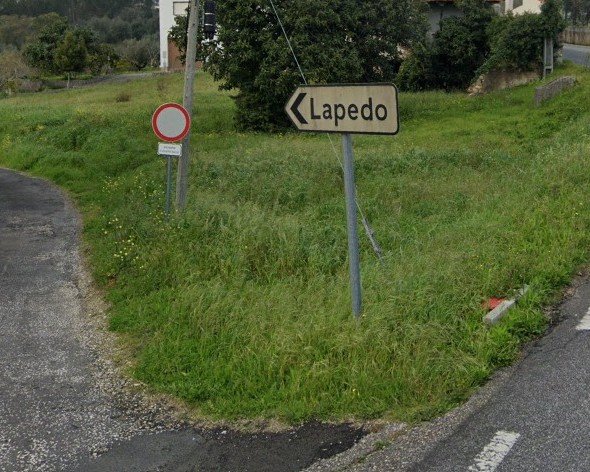
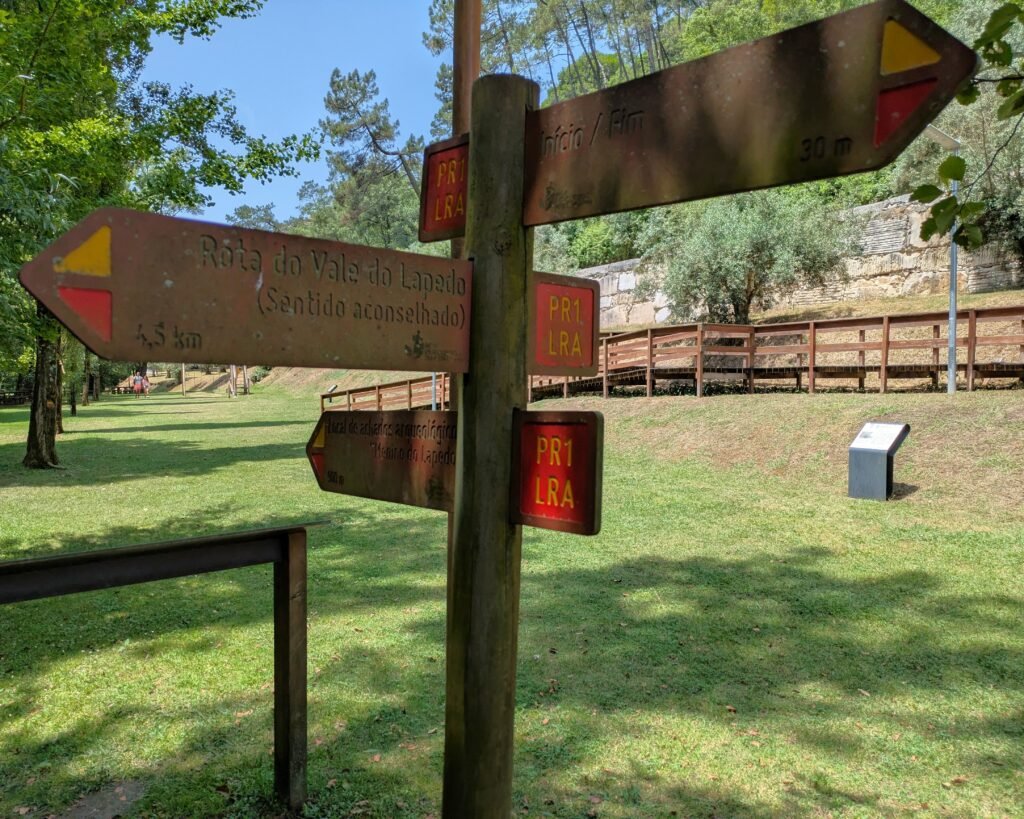
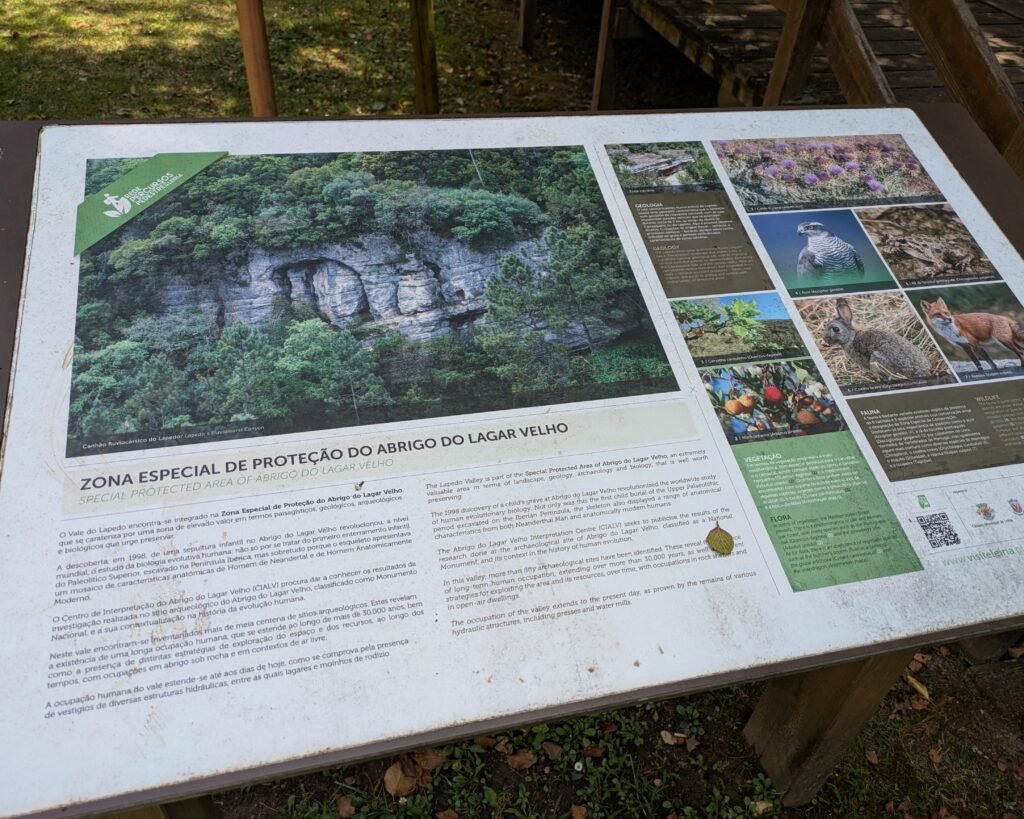
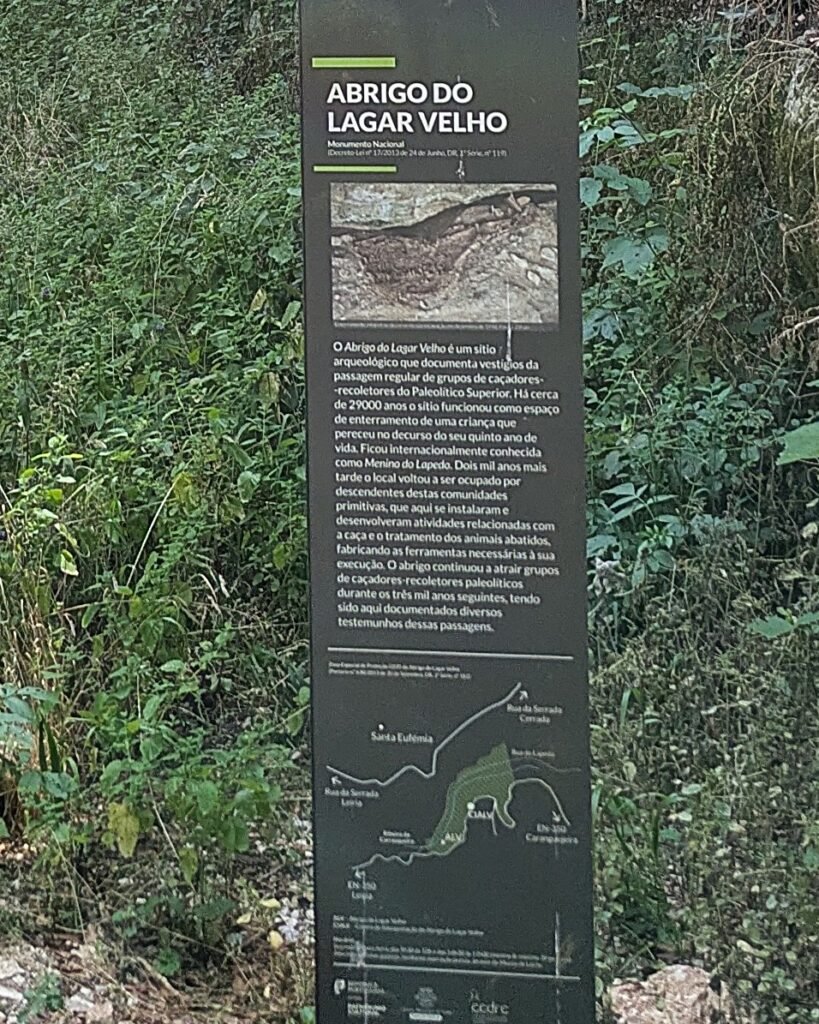
There are signs indicating the location of the interpretive centre.
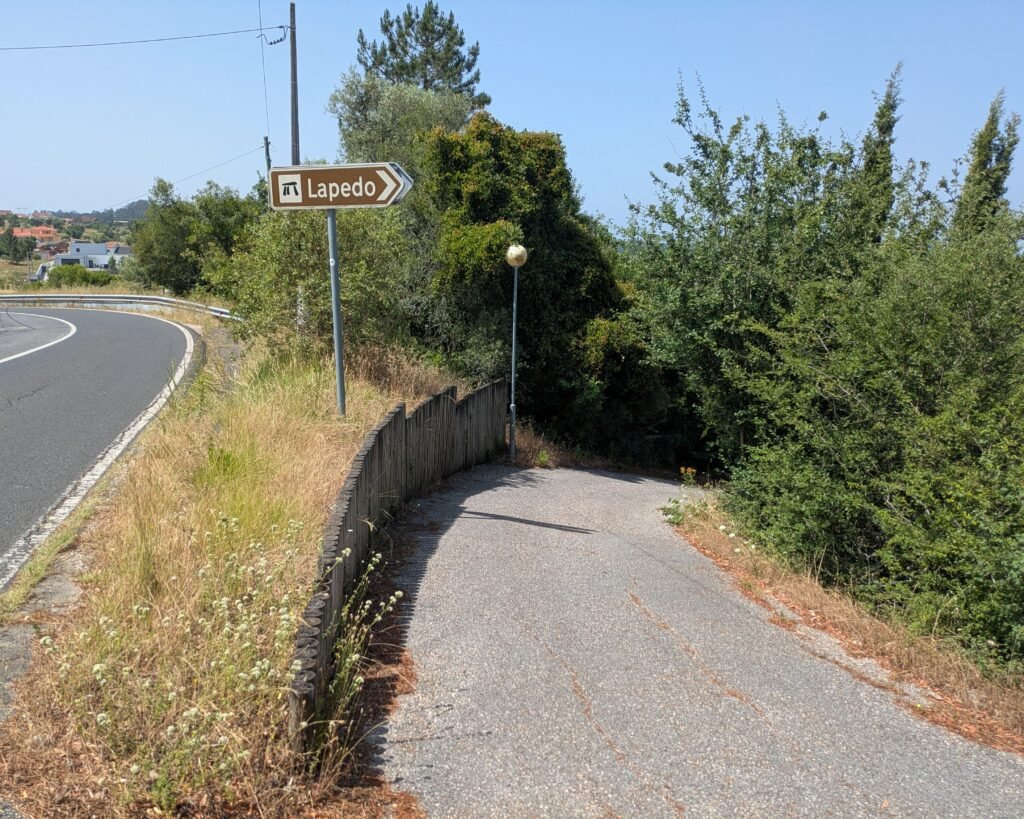
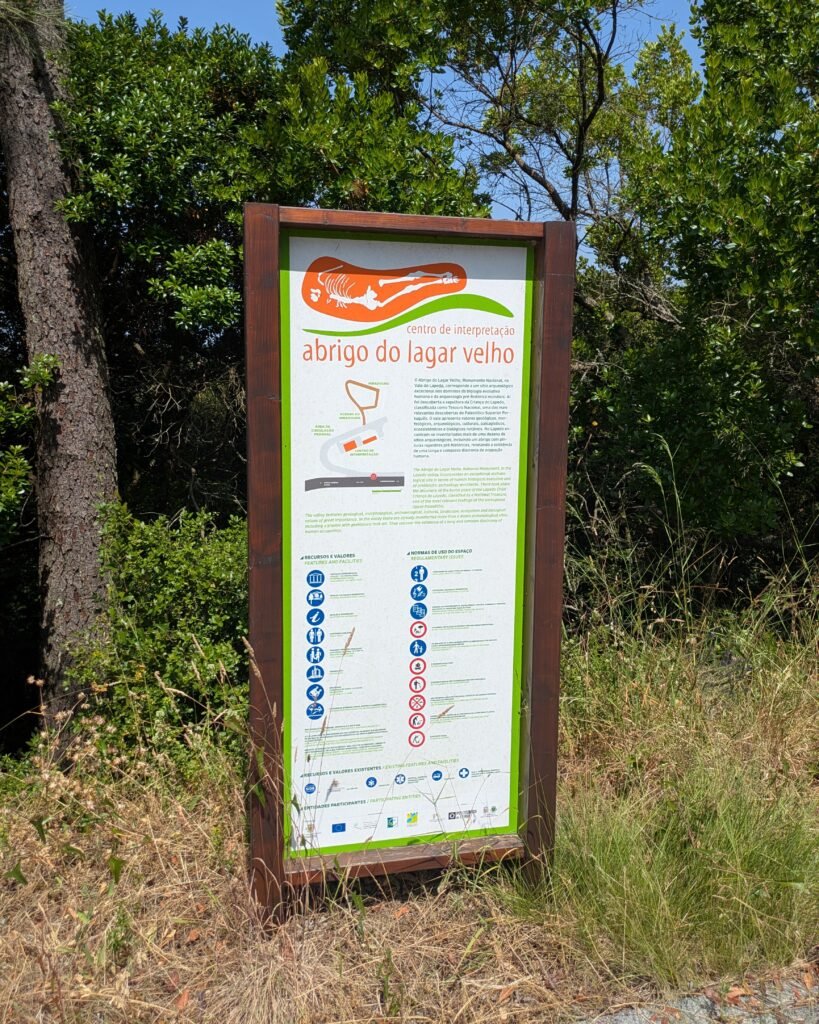
Links
- Article (in English) about the skeleton from Wikipedia
- Article (in English) about the shelter from Wikipedia
- Website (in English) of the interpretive centre from Visit Leiria
- Website with beautifully written text and photographs and diagrams (in English) from Twelve Earths
- Description (in Portuguese) of the hiking trail (LRA PR1) through the Lapedo Valley (with a PDF in Portuguese and English)
- Video (in English and Portuguese with English subtitles) from the BBC
- Video lesson (in Portuguese) from RTP
- Video (no language) from the Town Council of Leiria
- Website with information about the interpretive centre and the skeleton (in Portuguese with translation available) from the Town Council of Leiria
- News article (in Portuguese) about more accurate dating published in 2025 by Público
- News article (in English) about the find and the more accurate dating published in 2025 by Smithsonian Magazine
- Description (in Portuguese) from Archaeologist’s Portal of Directorate-General of Cultural Heritage
- Designation (in Portuguese) as a National Monument by the Directorate-General of Cultural Heritage
- Detailed information (in Portuguese) from the database of the Directorate-General of Cultural Heritage
Nearby
The museum in Leiria (about 10km away) has a display with more information and a video. (Entry is €2)
The Neolithic Anta do Azurrague, is about 30km away. There are many fossilized dinosaur footprints (including the impressive Natural Monument) in the mountains of Aire and Candeeiros, to the south, about 30-50km away.
Sources
- Zilhão, João, and Erik Trinkaus, editors. Portrait of the Artist as a Child: The Gravettian Human Skeleton from the Abrigo Do Lagar Velho and Its Archeological Context. Instituto Português de Arqueologia, 2002, www.academia.edu/1929227/Portrait_of_the_Artist_as_a_Child. Accessed 13 Jan. 2025. ↩︎
- Almeida, Francisco, et al. “The Lapedo Child Reborn: Contributions of CT Scanning and Rapid Prototyping for an Upper Paleolithic Infant Burial and Face Reconstruction. The Case of Lagar Velho Interpretation Centre, Leiria, Portugal.” 2007. Accessed 28 Jan. 2025 from ResearchGate. ↩︎
Duarte, Cedália, et al. “The Early Upper Paleolithic Human Skeleton from the Abrigo Do Lagar Velho (Portugal) and Modern Human Emergence in Iberia.” Proceedings of the National Academy of Sciences, June 199AD, pp. 7604–7609, www.academia.edu/66166558/_Paleolithic_human_skeleton_from_the_Abrigo_do_Lagar_Velho_Portugal_and_modern_. Accessed 26 Nov. 2025.
